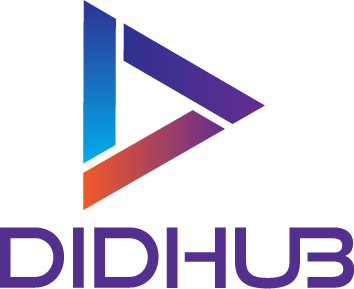Abbreviations like BaaS, AI and DeFi were among the top digital banking trends of 2021. What words will you need to get used to in 2022? Read more below.
In the past year, several digital banking trends caused massive transformations and disruptions in the industry. Major financial players rode the digital wave of opportunities emerging from these digital banking trends like Artificial Intelligence (AI), and Decentralised Finance (DeFi). Driven by the increase of banking consumers with access to more technology. The Finance sector will constantly adapt to offer more customised digital services.
Digital banking in 2021: an introspective look
In 2021 we saw the rise of banking-as-a-service (BaaS), which accounted for the increase of more traditional banking institutions partnering with fintech and third-party developers in rolling out their application programming interfaces (APIs). Major players like ABN Amro rode the digital wave of opportunities emerging from this trend and others. And only seems to be getting started so far.
Automation was one of the major banking industry trends that took a massive climb in 2021. Banks continued to make strides to make autopayments convenient. We saw leading investment banks like Royal Bank of Scotland make it extremely easy to set up digital systems to make automatic transfers for their customers. They did so by using their customers’ pre-populated personal information, in order to avoid manually completing certain tasks. With the success of this trend, we can expect it to gain more prevalence in the coming years.
Personalisation was another disruptive banking trend in the past year that helped many fintech and banking institutions gain sustainable growth. Specifically as it relates to mobile banking. Some of its key players like Revolut dominated the digital banking sector. From providing easy and quick sign-ups when registering for an account to the spending insights on the analytics dashboard.
Digital banking trends to watch out for in 2022
Based on early research data, these following trends are expected to advance in the new year:
- Hyper personalisation of services and offers for bank customers
One of the growing banking industry trends that is becoming more of an imperative than an option. Hyper personalisation calls for the offering of custom-made digital banking experiences for each customer. Backed by Artificial Intelligence (AI) and behavioural science, this trend is characterised by collected data on an individual’s shopping habits, location, transaction history, and more. This data could later be used by the bank to make future offers based on the customers’ evolving needs.
A key player of note in adopting this trend is the Bank of Ireland. This major bank leverages consumer data to reinforce a more personalised customer experience. By using data science as a core component of their mobile banking experience. It allows the bank to use data science to predict their consumer behaviour even more accurately. They plan to employ such tactics, similar to platforms like Netflix, to make suggestions to their customers on the right actions to take whenever customers need them. - Decentralised finance
Decentralised Finance, also known as DeFi, is one of the up-and-coming fintech trends steadily making headway. It uses emerging disruptive banking technology to remove all third-parties in financial transactions. Blockchain technology allows customers to execute financial transactions without having to go through their bank. Instead, the transactions are peer-to-peer (P2P) using cryptocurrency as their value.
Investment banks like Societe Generale, the french-based multinational financial services company are expected to utilise banking technology trends like these, to disrupt the finance industry. A major way of accomplishing this would be the use of “smart contracts” which are lines of codes that enables its users to lend or trade money. - Green Finance
Green Finance is another example of these disruptive banking trends taking on a pivotal role in the world of finance. It comprises structural activities that are designed to ensure a sustainable environmental result. ESG investing and carbon insight features as delivered by Meniga played a big role in this trend already in 2021.
Financial institutions like BBVA are expected to take part in championing banking industry trends like these. Ranking as one of the top five European banks for sustainable finance. BBVA pledges its commitment to investing more to sustainable infrastructure projects, financial inclusion, transition to low carbon, and agrobusiness. Rather than providing financing for fossil fuel-related transactions in the years to come. - Biometric security technology
Biometric security technology is another example of these digital banking trends making massive strides. With the convenience of digital banking, it also brings the same or higher need for more secure methods to access online information. Biometric security has become a disruptive banking trend to watch out for in the coming years. It is characterised by the use of biometric technology scans to authenticate physiological features such as fingerprints, facial features, voice patterns, and more, which are then used to identify an individual.
For this reason, HSBC, one of the largest banking and financial services institutions in the world, is expected to take on this digital banking trend into 2022 and beyond. HSBC has reported a 50% drop in banking fraud since the release of their customer voice authentication system. - Cardless ATM Withdrawal
The cardless ATM withdrawal is another example of these digital banking trends expected to continue on the rise in 2022. This service allows bank customers to withdraw cash from an ATM without the use of a debit or a credit card.
Notable banks such as ABN Amro, let their customers make contact-free cash withdrawals from ATMs using their mobile banking platform. To use this service, customers are able to scan a QR code on the ATM with their cellphones to activate the app and verify their identity. Then they are able to select the account they wish to withdraw from. And then the amount of cash they want before confirming the transaction from their smartphone. Innovative banking technology trends like these are set to be on the incline. As clients are increasingly demanding to have most, if not all of their payment solutions on their mobile devices.
Conclusion
What we all now know as “digital banking” had a massive emergence in 2021 due to increasing demands by consumers who were in need of a more convenient and efficient way to access their finances online. Without the sole reliance on visiting physical banking locations. The banking industry underwent significant disruption through the roll-out of fintech trends like online deposits, mobile apps, hyper personalisation, and other digital banking trends becoming the norm. All meeting the ever growing demands of consumer needs through digitisation within every level of banking.





